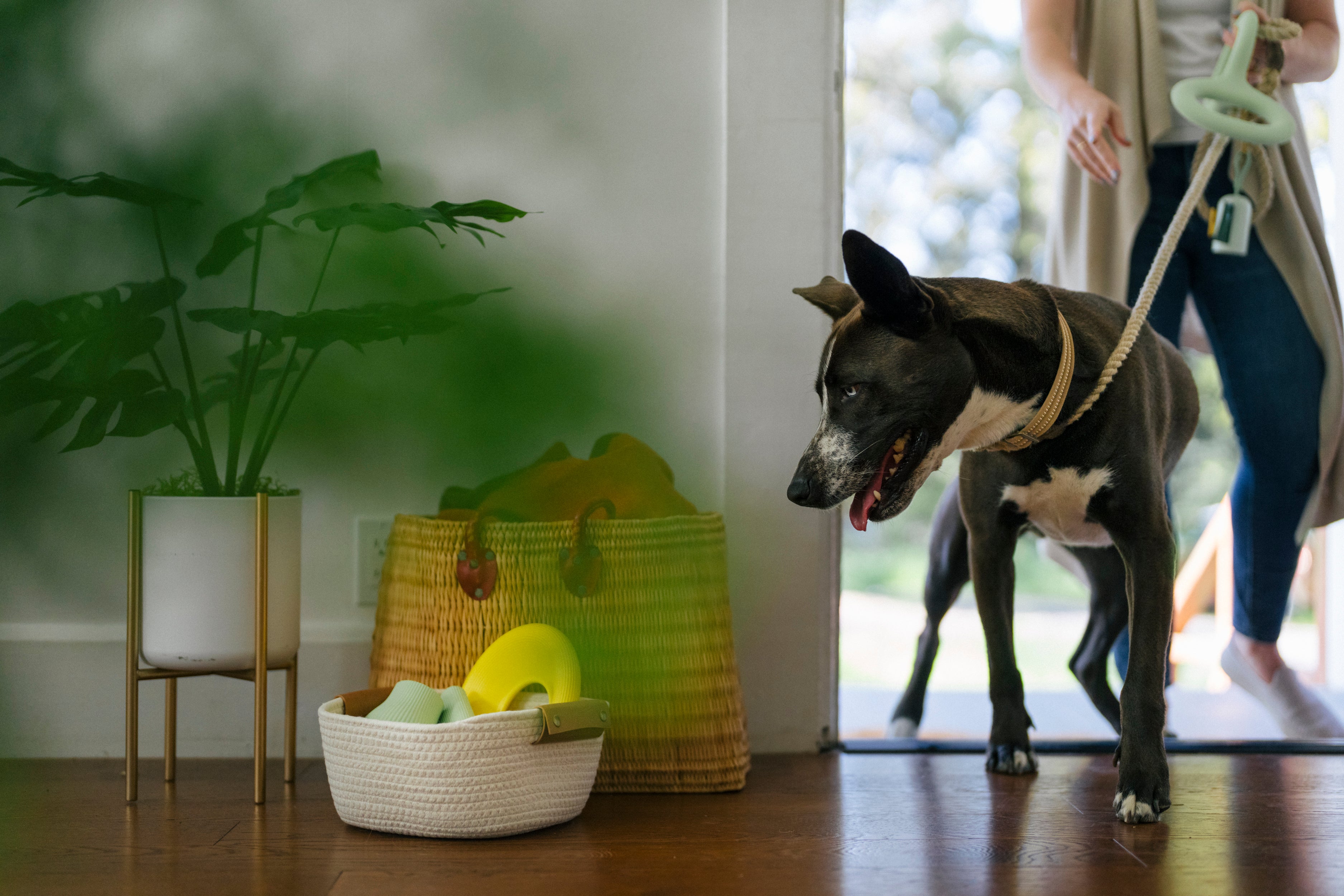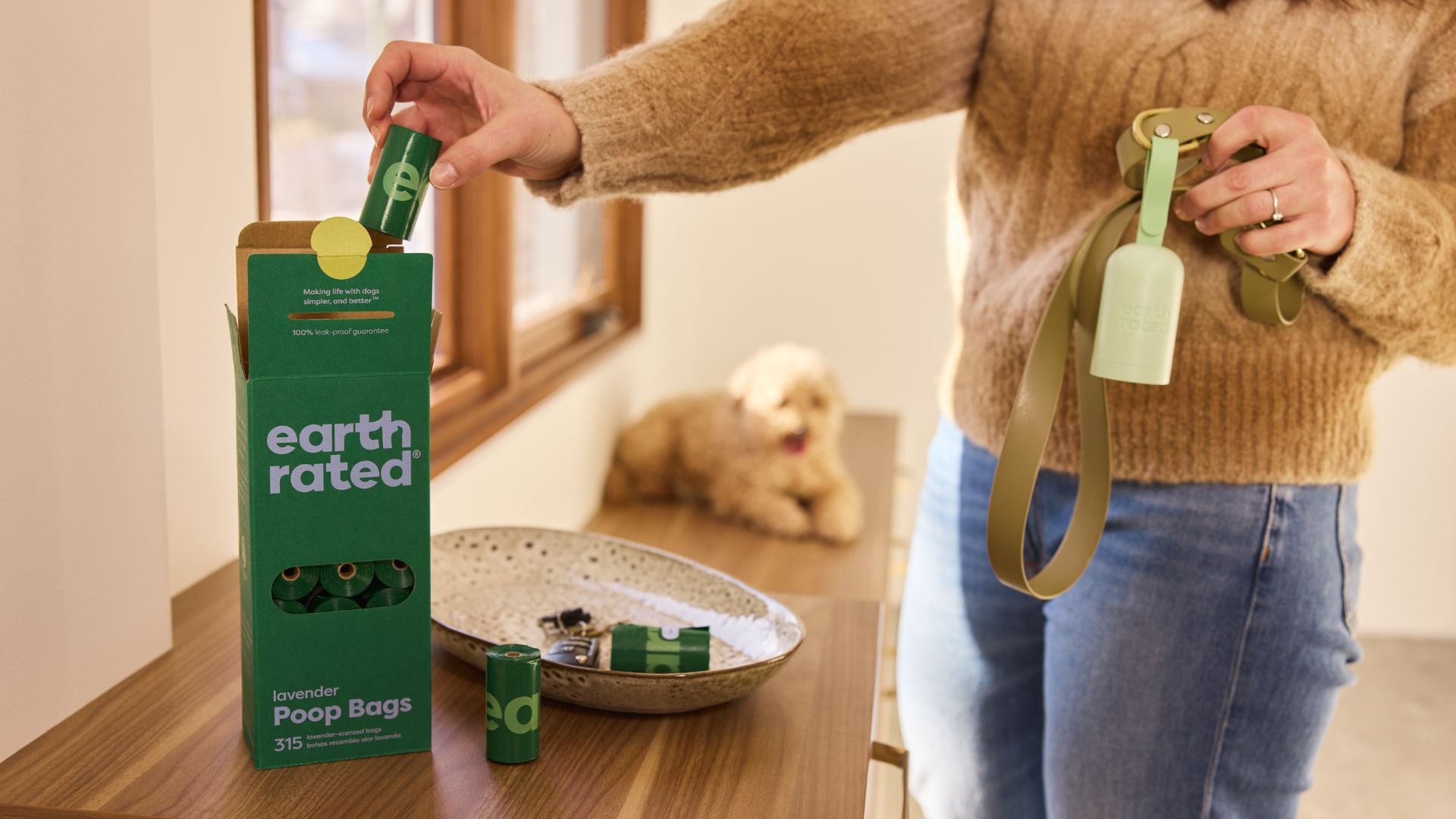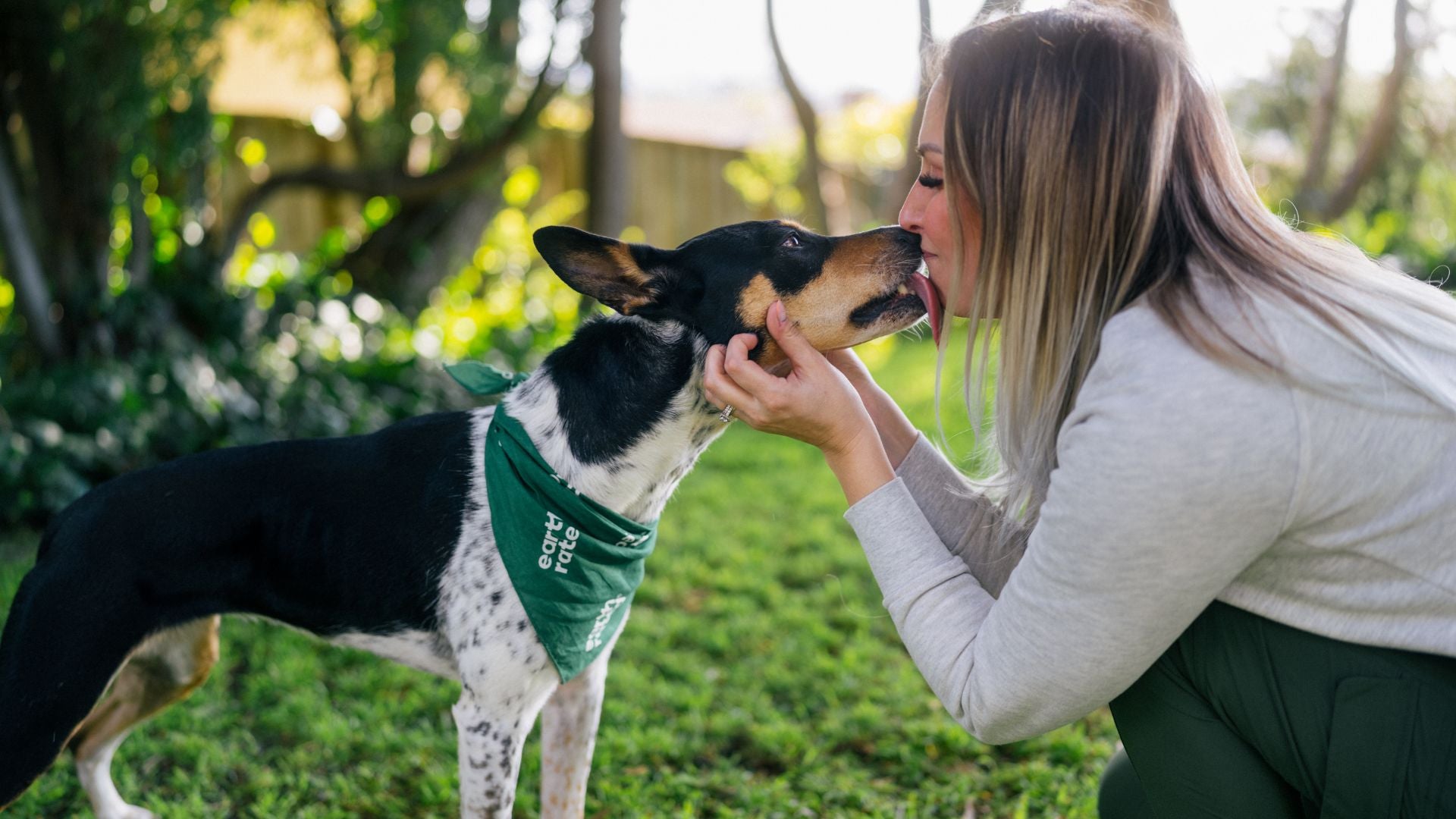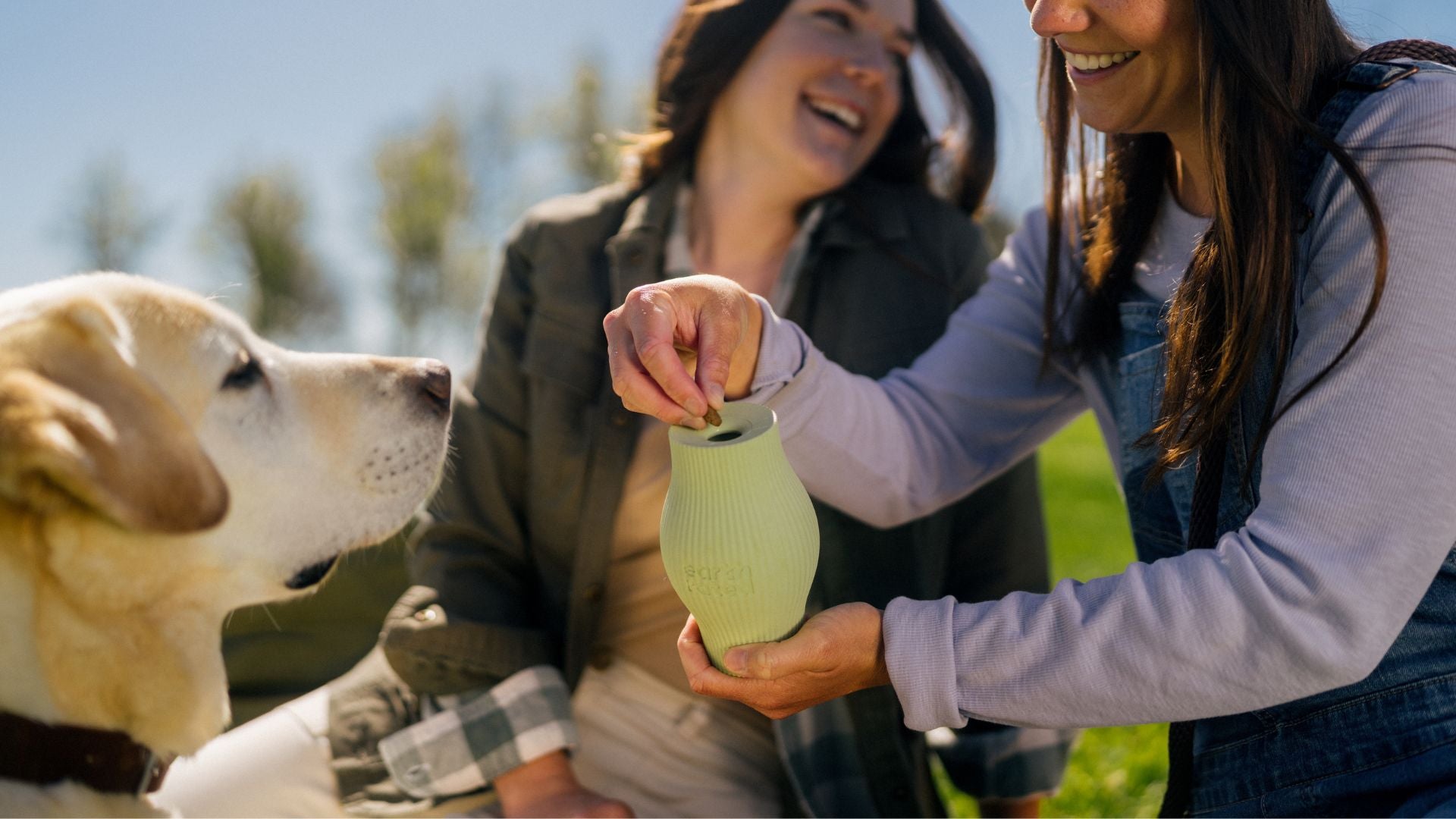Bringing home a new dog is a very exciting time, though it does come with some challenges. We spoke to Aryel Lafleur, a veterinary technician and co-owner of Trop Chien who said that “consistency, kindness, training, and a well-organized routine” are recommended for first time dog owners who are starting their pet parent journey.
From picking the right dog breed to dog-proofing your home, being a first time dog owner requires some careful considerations before your new dog can step their paw through the door!
Below is our in-depth guide for all new dog owners as they embark on this exciting new chapter.

Choosing the Right Dog
Choosing the right type of dog is essential for setting yourself up for success. Things can go much smoother for first time dog owners if they focus on selecting the right breed for their lifestyle.
Factors to Consider
Finding the right companion for you relies on several factors, such as your lifestyle and living situation.
Are you an outdoor enthusiast looking for an adventurous partner? Or someone who prefers quiet evenings? While a less-active family can enjoy a more active dog with careful planning, choosing a dog that matches your activity level is much easier.
Typical breeds and activity levels include:
- Active: Border Collie, Jack Russell Terrier, Siberian Husky
- Moderate: Golden Retriever, Labrador Retriever
- Low: Bulldog, Cavalier King Charles Spaniel, Shih Tzu
Where you call home matters too! If you have a house with a yard, a larger more active dog like a Siberian Husky will have plenty of space to roam. On the other hand, if you have an apartment, a smaller dog like a Pug or Bichon Frise may be the best option.
Some dogs are perfectly fine in a home with lots of hustle and bustle. However, other dogs are more sensitive and prefer a quieter household. Placing a noise-sensitive dog in a chaotic household can lead to anxiety and unwanted destructive behavior.
- Family-friendly: Golden Retriever, Labrador Retriever, Poodle
- Quiet household: Basset Hound, Greyhound, Whippet
It’s also a good idea to consider what type of companion you would like your new dog to be. Some breeds are known for being more laid back and independent, while others have guarding instincts. Not all dog breeds are the same, so it’s vital to research their temperament.
Typical breeds and temperaments include:
- Playful & energetic: Labrador Retriever, Jack Russell Terrier, Border Collie
- Relaxed & independent: Basset Hound, Bulldog, Greyhound
- Loyal & protective: German Shepherd, Doberman Pinscher, Rottweiler
Finally, you should also consider the dog’s grooming needs. Low-maintenance dogs are easier for those with less time on their hands. A long-haired breed is perhaps not the best choice if you don’t have enough time to consistently brush them.
If you’re not sure which breed is the best for you, some dog breeds are better for first time owners. For smaller breeds, Aryel recommends breeds like Cavalier King Charles Spaniels, Beagles, Poodles, and Shih Tzus.
If you’re interested in larger dogs, she recommends Labradors, Boxers, French Spaniels, and Standard Poodles.
Adoption vs. Buying
When considering adding a dog to your family, the two most common avenues to consider are adoption and buying. Each route has its own set of advantages and potential drawbacks.
Adopting a dog not only offers the chance to make a meaningful difference in an animal's life but can also be a more economical route to dog ownership. Adopted dogs generally come with a clear assessment of their health and behavior and many are already house-trained. Adoption helps to alleviate pet overpopulation and is a direct support to animal welfare efforts. While some potential owners prefer specific breeds, it's a lesser-known fact that breed-specific shelters do exist. Although many ethical concerns surround breeding operations, not all breeders are bad. Buying from a breeder can suit those who may be more willing to invest more money, time and research into the selection process.
Both choices require careful consideration to ensure that the decision aligns with your values, lifestyle, and the well-being of the dog.
Preparing Your Home
Before your new dog steps their paws in the house, you’ll need to do some work to prepare your home. This involves stocking up on pet must-haves and dog-proofing your house for safety.
The type of dog you’re getting will affect what you may need. For example, dogs with high prey drive will likely want more squeaky dog toys compared to dogs without.
Here’s a list of must-haves for practically all pups:
- Dog food and treats
- Food and water bowls
- Collar and leash
- Identification tag
- Dog bed/Crate
- Toys
- Poop bags
- Pee pads for puppies
- Grooming supplies (including toothbrush)
- Pet first-aid kit
If you are bringing home a puppy, you can check out our puppy essentials article. Don’t forget to apply for a dog license if that is necessary where you live.
Dog-Proofing
It’s a good idea to spend some time dog-proofing your home. Puppies tend to chew a lot, so your main concern is removing anything they might chew that can be dangerous. Try to secure electrical cords and remove any poisonous plants. Ensure that harmful chemicals and medications are out of your dog’s reach.
Baby gates are great for blocking off stairs or rooms that are too difficult to puppy-proof. Ensure your dog has plenty of alternative things to chew, too, including lots of safe chew toys.
If you have children or other pets, slowly introduce them to your new puppy. Always supervise new interactions and ensure that everyone is having a good time by reading your dog’s body language.

Training and Socialization
Training your dog isn’t something you can do overnight and will require lots of consistency and patience. Aryel says that “our expectations for puppies can be quite high. It's important to remember that they are still babies, and it would be abnormal for them to behave like fully-trained adult dogs.”
Aryel recommends rewarding any desired behaviors with treats and praise. These create a positive association for the dog and encourage them to keep doing that behavior. Try to use commands and cues consistently. If you mix things up or change them, it can make your dog confused.
On top of reinforcing positive behavior, you should also start training your new dog on cues and commands. How quickly your dog will pick up these commands will depend on them so go at their own pace.
5 Essential Commands
The exact words you teach your dog will depend on your own preferences and needs. However, there are 5 common commands that most dogs should know:
- Sit: Teach your dog to sit by luring them with a treat above their head, then slowly move it back over their head until their hindquarters touch the ground. Say "sit" as they sit and reward them.
- Stay: Start by gradually increasing the duration and distance of short stays while holding the leash. Reward for staying put.
- Come: Encourage your dog to come to you by using a treat or excited voice, saying "come" as they approach. Reward them once they reach you.
- Leave it: Teach your dog to drop something by offering a better treat, saying "leave it," and then rewarding when they drop the first object and take the new one.
- Heel: While walking your dog, keep them close and focused on you. Use a leash and gentle corrections when necessary to reinforce good behavior.
You can teach many of these commands at home. However, dogs (and their owners) often benefit from a few group sessions with a professional trainer, too.
Socializing Your Puppy
Dogs have a critical socialization period between the ages of 5 to 14 weeks. During this time they learn about different people, animals, sounds, and sights which helps them understand the world around them. This period is considered critical because whatever is learned during this time (either positive or negative) is usually taken with them into adulthood.
The easiest way to socialize your puppy is through group training classes. These classes provide some training insights and introduce your puppy to other puppies and people. Additionally, you can also introduce your puppy to the friendly dogs your friends own. Just be sure to wait a week after your puppy’s first round of vaccinations before you introduce them to other dogs.
If you adopt an adult dog who has passed this critical socialization period, socializing them with other dogs will take much more careful consideration and may need the help of an expert dog trainer.
Common Undesired Behaviors
When you bring your new pup home, you may notice some undesired behavior. Aryel points out that “if there's a behavior you dislike, such as barking, biting, or jumping, it's crucial not to assume that it will naturally disappear over time. In most cases, unaddressed behaviors tend to escalate and may worsen if not handled appropriately and promptly.”
Here are some common undesired behaviors and the best way to handle them:
- Separation anxiety: Provide enrichment activities while alone, gradually increase separation time, and desensitize them to departure cues.
- Digging: Address boredom with exercise and mental stimulation, provide designated digging areas outdoors, and discourage digging in unwanted areas.
- Destructive chewing: Ensure chewing needs are met with appropriate toys, address underlying anxiety, and manage their environment to prevent access to inappropriate items.
- Excessive barking: Identify triggers, address underlying anxiety, reward quiet behavior, and avoid yelling.
- Leash pulling: Use a harness and positive reinforcement training to teach loose leash walking, reward good walking behavior, and avoid forceful corrections.
Aryel explains that “the most effective way to tackle these behavioral issues is to enlist the help of a professional trainer or participate in group classes offered by a company that employs positive and science-based methods for training both you and your dog.”
Potty-Training
If you are bringing home a puppy, you’ll want to begin house training right away. Establish a consistent exercise, food, and pottying routine as soon as your puppy comes home. Take your puppy to a designated potty spot anytime they need to use the bathroom. Anytime your dog uses the bathroom properly, offer plenty of treats and praise.
While potty training, you’ll need to limit your dog’s freedom in the house so you don’t have any unwanted surprises. When accidents occur, you can use an enzymatic cleaner to eliminate lingering odors.
Exercise and Play
Regular exercise is essential for dogs. It provides lots of benefits, including:
- Maintaining physical health
- Burns energy
- Provides mental stimulation
- Strengthens your bond
Some breeds require more extensive exercise than others. High-energy breeds like Terriers need over an hour of exercise a day, while a smaller breed may only need 30 minutes.
Puppies tend to have shorter bursts of energy, while adults enjoy sustained exercise. There is some individual variance to each breed based on the dog’s temperament. If your dog seems hyperactive or bored, they may need more exercise.
There are lots of ways to get your dog the playtime they need, including:
- Daily walks
- Off-leash play
- Dog sports
- Indoor playtime
- Mental stimulation through treat dispensers
Try to use several types of exercise each day to keep things interesting, especially if you have a high-energy breed.

Long-term Commitment
Dog ownership isn’t just about couch cuddles, walkies, and adorable pictures, it’s a huge, long-term commitment. You’ll need to take care of your dog for their entire lifespan, which can be nearly two decades in some cases.
The financial implications can be significant and should also be considered. Dogs often require thousands of dollars in care each year. Most of this involves vet care, food, and training. If your dog needs professional grooming, you’ll need to factor that in, too.
Consider getting pet insurance to help cover the cost of vet bills and emergencies. Be sure to make a note of your nearest emergency animal hospital so you don’t have to waste time during an emergency.
Many people overlook the time commitments of owning a dog. Most dogs need daily walks and exercise, even if they aren’t a high-energy breed. You may spend a significant portion of your day exercising your dog.
Resources and Support
This guide is just the beginning, there are lots of resources for you to explore as you navigate this exciting journey of being a pet parent.
Common resources to use include:
- Local vets and trainers
- Other dog parents you meet on your walks
- Online communities
- Training books
- Websites
Join the Earth Rated community; you won't regret it! Share your first time dog ownership stories and connect with fellow dog lovers for more tips, inspo and cute dog pics.
Frequently Asked Questions
Is It Hard Being a First-Time Dog Owner?Being a first time dog owner is not necessarily hard, but it can be challenging at times. Dog owners can often make it more challenging when routines are not well-structured, and when the dog's environment is not managed properly.
What Do First-Time Dog Owners Need?Beyond the basics listed above, first time dog owners also need to know where and when to take their dogs for their vaccinations and where their nearest emergency animal hospital is.
What is the Best Dog for a First Time Owner?Dog breeds like Cavalier King Charles Spaniels, Boxers, Poodles, Shih Tzus, Labradors, and French Spaniels are great for first time dog owners.








